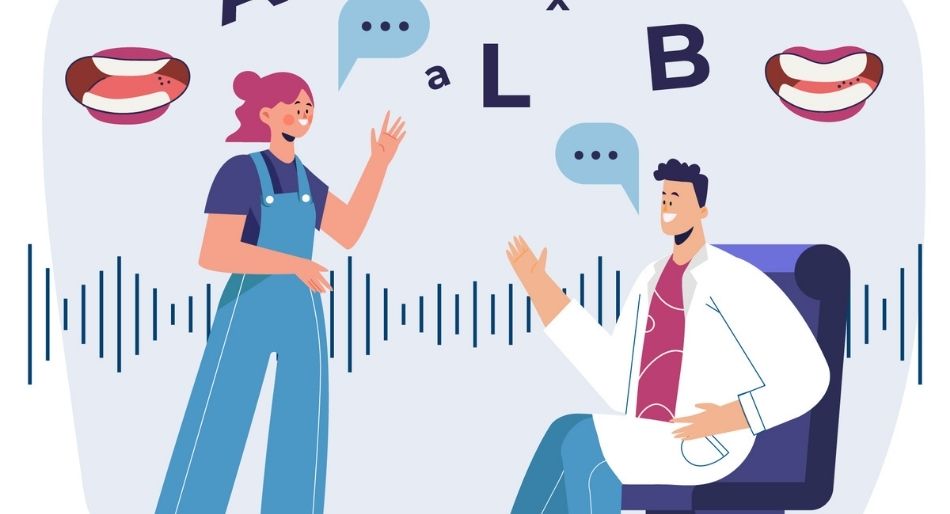
What are the activities for speech and language therapy?

ACTIVITIES FOR SPEECH-LANGUAGE THERAPY
Do you have a child, a family member, or a student who has difficulty
speaking or communicating?
A speech disorder is described as an individual having problems creating or
forming the speech sounds needed to communicate with others. This can make
the child's speech hard to comprehend. A child with a speech disorder may
have difficulty with speech sound production (articulation or phonological
disorder), voice, resonance, or fluency (the flow of speech). A language
disorder is where a child has difficulty in understanding words that they
hear and read, and/or difficulty in expressing needs, thoughts, and
feelings (disorders like ASD, ADHD, Cerebral Palsy, etc). If you come
across your child or family member with any speech disorder, consult your
nearby speech therapist.
Speech-Language therapists use fun activities, from vocabulary games to
board games and beyond, to help their clients practice correct
Speech-Language production.
Here are some activities for speech-language therapy activities that parents can perform at home with the child:
A. Speech Disorders: -
1. Articulation disorder
a. Articulation treasure hunt: Collect some treasures and hide them under
any small containers (plastic party cups and bowls work perfectly for this
activity.) Place a picture-word card on top of each and let the child get
to work. When they’ve said the target word correctly, they can lift the cup
and check the underneath treasure (reinforcements).
b. Sensory Bin: Sensory bin activities are a fun way to hide articulation drills in play! We can use any dry, non-sticky material such as beans, rice, or even sand. Keeping little hands busy and having them dig for their targets makes the work fun and functional!
c. Car mat Articulation activity: The parents can design or buy a ready-made mat and place different target words on different stops. Have the child drive their cars around the mat or table to different articulation cards (target words). Then have them repeat the target words a few times before driving to the next stop.
d. Word Search: Parents can hand out the child a printable word search and ask the child to find the target words and articulate them.
2. Voice disorders
a. Cup bubbles: Give your child a cup filled with water and a straw. In
this activity, the child is asked to produce bubbles in water such as ''
ooo bubbles high pitch, ooo bubbles low pitch, and oooo bubbles from low to
high pitch and vice versa''.
b. Vocal hygiene: Keeping in mind the information on vocal hygiene and hydration given by the clinician and implementing that into the child’s daily life. Drawing cartoon figures and narrating stories to explain vocal hygiene better.
c. Breathing: Practicing the correct breathing pattern as shown by the clinician in the session. Parents can make sure to practice this at home first in the supine position and then gradually shift it to the prone sitting position.
3. Fluency Disorders
a. Techniques: Talk with your child at a slow rate and with an easy flow of
speech. Model for your child to follow.
b. Syllable timed speech: Breaking each word into syllables while talking, eg. I am go….ing to the mar…..ket to buy an um…brel….la. Demonstrate the child while talking to them (modeling) and slowly fade away this method of speaking.
c. Roleplaying: The parent and the child can practice role-playing of difficult situations for the child e.g., talking to the teacher, buying a bar of chocolate from a shop, etc.
4. Resonance disorder
a. Awareness training: Teaching the child about oral and nasal sounds, e.g.
for these sounds we use Mr.mouth and other sounds Mr.nose. When we use Mr.
mouth wind comes out of the mouth.
c. Blowing activities: Remediation for nasal air emission. Blowing bubbles, pinwheel, whistle, bubbles in water, etc. have the child start these blowing activities with nasal occlusion, then phase out eventually so that the child can create adequate oral airflow and perform these activities without nasal occlusion.
B. Language Disorders: -
1. Activities for attention:
a. Sorting- Asking your child to sort out vegetables. Ex: all onions in one
bowl/vessel and all potatoes in one bowl/vessel
b. Coloring- Parents can get a fun coloring book and can sit with the child and color the pictures. Ex: picture of Peppa Pig.
c. Puzzles- there are various category puzzles available like animals, vehicles, mickey mouse, Peppa pig, etc puzzles. The child can be given these puzzles to solve at home.
2. Activities for eye contact:
a. Puppet talk- Introduce it thoughtfully to your child. You could, for
example, gently pat it and have your child touch it with you. Ask your
child to assist you in determining the sounds the puppet makes, its name,
and what it enjoys playing with.
b. Peek a Boo- Play peek-a-boo with your child. Use different objects to hide your face e.g., hands, cushion, scarf.
c. Bubbles- Use bubbles to encourage your child to look at you. Blow some more bubbles when your child looks at you.
3. Activities for memory:
a. Tray game- Place a few objects on a tray, and allow your child to study
it for thirty seconds. Then, cover the tray with a cloth and get them to
recount all the objects they can remember.
b. Matching- Parents can buy or make some simple flashcards with matching pairs. Place them all face down and ask your child to lift them one at a time to form pairs.
4. Activities for Language comprehension:
a. Simon says- One person is assigned to be 'Simon' and gives instructions
like 'Simon says... pat your head, close your eyes’, and the child must do
that action. This requires the child to comprehend the instruction and
follow the command.
b. Story Telling- Parents can read out simple age-appropriate stories to the child and ask questions related to the story.
c. Cooking- Cooking or preparing snacks with children is a really helpful way to show them how to effectively follow step-by-step instructions, as well as the importance of accuracy and measuring.
5. Activities for Language expression:
a. Defining and Describing- Take a bag and put objects/picture cards in it.
Ask the child to pick one object, guess it and describe the object in a few
words.
b. Story Retelling- Once the parent has read the story to the child, ask the child to retell the story. Parents can prompt and provide cues to help the child to narrate.
c. Role-playing activities- Here the parent and the child can play different roles to encourage communication. Ex: the parent can be the shopkeeper and the child is the customer.
If you think your child or any other family member or friend you knows needs speech therapy, get in touch with the best speech therapists in Mumbai. Mpower has speech therapy services in other cities as well like Bangalore, Kolkata and Pune.
Also read,
Speech therapy for people with Schizophrenia. Find the best speech
therapist near you.
https://mpowerminds.com/blog/Speech-therapy-for-people-with-Schizophrenia-Find-the-best-speech-therapist-near-you
What causes a child to have speech disorders? Find the best speech
therapist in Mumbai.
https://mpowerminds.com/blog/What-causes-a-child-to-have-speech-disorders-Find-the-best-speech-therapist-in-Mumbai
Dyslexia- Signs, Symptoms, and Treatment. Find a speech therapist in Mumbai
https://mpowerminds.com/blog/What-causes-a-child-to-have-speech-disorders-Find-the-best-speech-therapist-in-Mumbai
Image credits: Freepik

Mpowering Minds 2026 – Women’s Mental Health Summit: Championing a New Era of Well-Being
Therapy Approaches That Help Heal Intergenerational Trauma: CBT, DBT, Somatic Work & More

